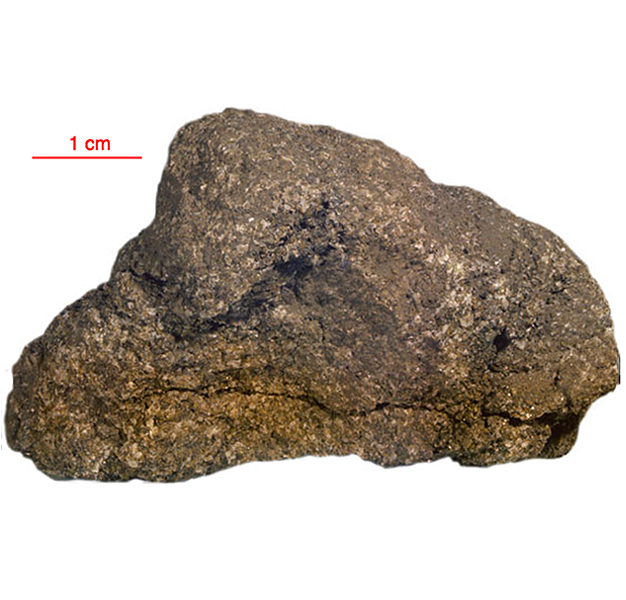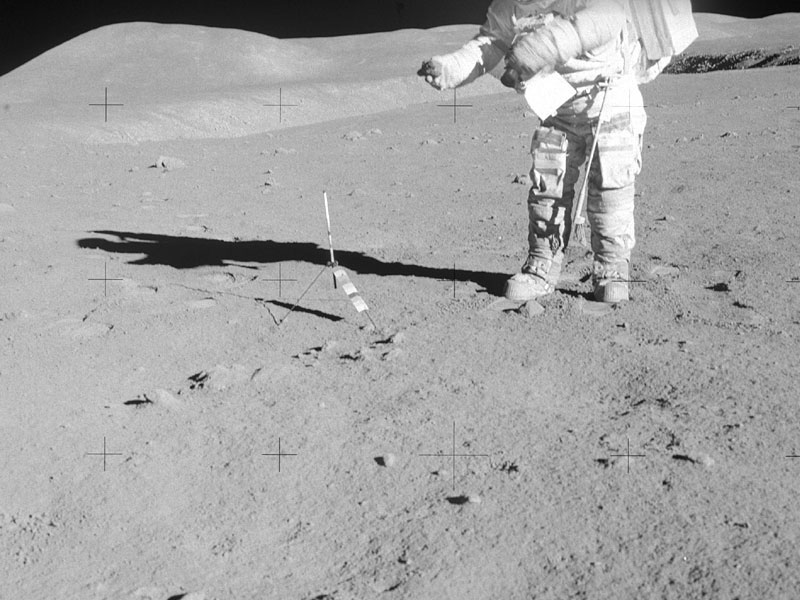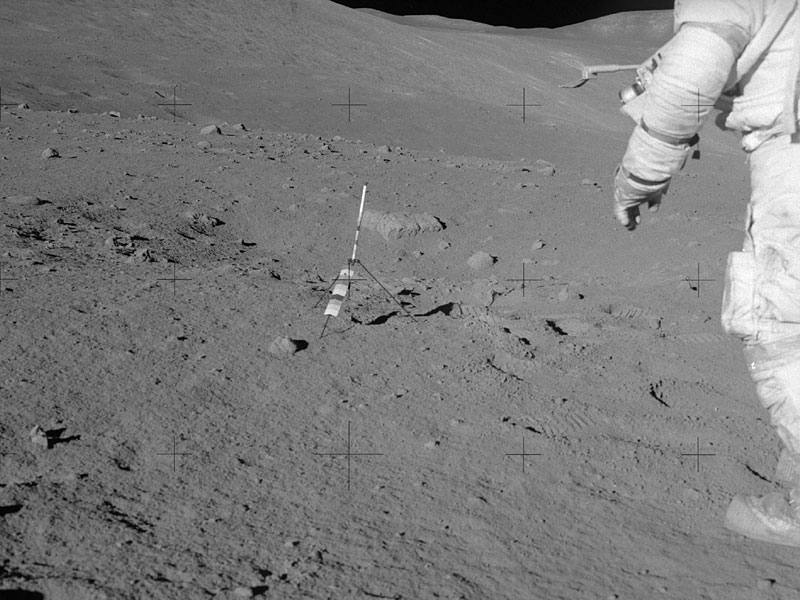
Fact sheet
15065 is coarse-grained lunar mare basalt. It came from the coarsest sample in the region and possibly represents a deeper part of a basalt flow that has been later exposed by a meteorite impact.
The thin section exhibits abundant prismatic/euhedral pyroxene (pigeonite) crystals with greenish cores and red-brown rims intergrown with anhedral to subhedral plagioclase. Ragged anhedral olivine grains are found enclosed in the pyroxene cores. Three large blades of tridymite can be seen in rotation 1. Ilmenite, troilite and metallic iron are the other main accessory minerals.
The sample weighed 1475.5 grams before analysis and has been dated at 3.34±0.09 billion years (Sm/Nd).
Further details of this and other Apollo samples are here: http://curator.jsc.nasa.gov/lunar/
The Apollo 15 landing site was in the Apennine Highlands, and close to Hadley Rille — a long, narrow winding valley. Approximately 76 kg of lunar material, including soil, rock, core-tube and deep-core samples, were returned to Earth.
This mission was the first flight of the Lunar Roving Vehicle which allowed the astronauts to venture further from the Lunar Module than in previous missions. During three periods of extravehicular activity, or EVA, on July 31st, and August 1st and 2nd, Scott and Irwin completed a record 18 hours, 37 minutes of exploration, travelling 17.5 miles, in the first car that humans had ever driven on the Moon.
Apollo 15 was launched on 26 July 1971.








